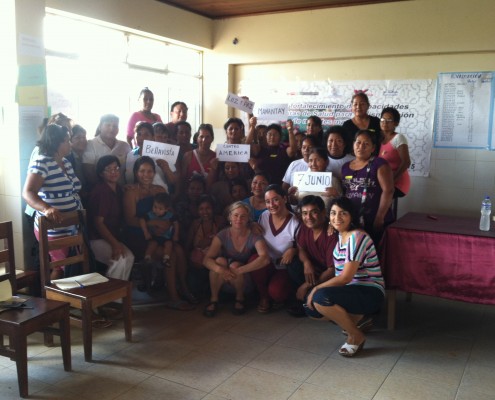Training in Pulcallpas
We are working with an obstetrician in Pucallpas Peru, to create a model to train and supply community health workers (CHWs) based on national recommendations. Though the Peruvian Ministry of Health has well developed recommendations for CHWs, no other regions in Peru are developing programs due to lack of resources. This program specifically aims to lower maternal mortality in Uyucali, the region in Peru that currently has the highest maternal mortality rate. Uyacali has a maternal mortality rate of 250+:100,000 live births compared with the national average in Peru of 75:100,000. This mortality rate has increased sharply over the past three years due to migration of Indigenous (Shipibo) people from the jungle who are not seeking out medical care.
The CHWs will begin a program of identifying all of the women who need contraception, are pregnant and/or are experiencing domestic violence (44% of women here!) and try to encourage them to receive services in the clinic. If not, the obstetrias will go to the homes. They have developed forms for the CHWs, sectors of responsibility for each one, schedules for reporting and a schedule for training every month.
We are training and supplying 30 CHWs who will serve approximately 15,000 people in 6 impoverished, Shipibo villages. The woman who is coordinating this program is an obstetria who runs her own, Peruvian non-profit, so the accounting and structure for finances is established.
We are paying for materials, papers, training supplies and transportation for the CHWs. Since the obstetrias receive their salaries from the government and the CHWs are volunteers, we are not paying any wages. We will be able to measure outcomes with data from the Ministry of health. I think all in all this is a great opportunity for a cost effective, cooperative program that may improve outcomes in an extremely poor area. I hope that we can look at continuing this program for 5 years. While I have not made any promises beyond one year, if after 5 years we can demonstrate effect, this could be a model for other areas of Peru and for the government to continue funding.

